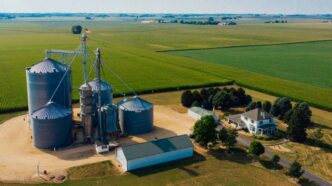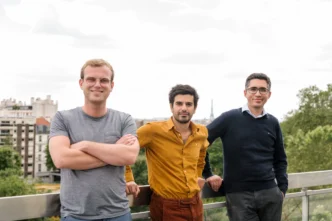The Earth is overflowing with data, satellites, drones, and sensors constantly monitor the planet from above. But there’s still much we miss beneath the surface. That’s where Fieldstone Bio comes in. The MIT spinout believes that environmental microbial sensors can unlock a deeper layer of insight—one that’s invisible to traditional tools.
Founded in 2023, Fieldstone Bio emerged from the lab of MIT professor Chris Voigt. His team developed a unique method to engineer microbes that change color when they detect specific substances—like nutrients, toxins, or even explosives buried underground.
“What if we could harness how microbes sense and respond to the environment—and make that visible to us?” asked Brandon Fields, the startup’s co-founder and chief science officer. “They’re constantly performing trillions of calculations. We just need to learn how to read them.”
Now, with a $5 million seed round led by Ubiquity Ventures, along with E14 and LDV Capital, the team is preparing to bring this lab-grown innovation into real-world environments—from farms to minefields.
Mapping the Invisible: Microbes, Drones, and AI
Here’s how it works: Fieldstone’s scientists first isolate microbes from the environment they want to monitor—say, farmland or contaminated soil. They then engineer DNA-based sensors into these microbes to detect specific compounds like nitrogen or TNT residue. Each microbe strain is tested to see which ones survive best and deliver clear, stable signals.
Once ready, these microbial environmental sensors are dispersed using drones over a target area. After several hours or days—depending on the application—another drone equipped with a hyperspectral camera flies over the site to capture data.
These aren’t ordinary images. Hyperspectral cameras divide light into hundreds of wavelengths, far beyond what the human eye can see. Since Fieldstone’s engineered microbes reflect a unique spectral signature when they detect a target chemical, the system can pick up even the faintest signs of contamination or nutrient presence.
This is where AI steps in. Machine learning models trained on the spectral fingerprints of the microbes help turn the data into highly detailed heat maps, showing exactly where compounds are present. This offers far better resolution than traditional methods, which often rely on manual soil sampling spaced out every 100 feet.
With Fieldstone’s system, resolution improves to one inch, revealing contamination hotspots or nutrient gradients with surgical precision.
Beyond the Field: From Agriculture to National Security
Fieldstone Bio’s microbial sensors have clear applications in agriculture, where they can help farmers optimize fertilizer use and improve soil health. But the tech also holds promise in national security, for detecting buried explosives, and in environmental monitoring, like spotting arsenic or heavy metal pollution.
“In the future, you won’t even need to apply the microbes,” Fields explained. As the database grows, the AI models may learn to correlate other natural spectral signals with known contaminants—making it possible for drones, planes, or even satellites to perform global-scale chemical sensing with zero contact.
Of course, releasing genetically modified microbes into the environment comes with regulatory hurdles. The company has already begun coordinating with the EPA to ensure full compliance.
CEO Patrick Stone emphasized that the company is focused on building a robust, safe, and scalable platform. “Our long-term vision is a new environmental layer of data—powered by biology and revealed through AI,” he said.
With this fresh funding, Fieldstone Bio is one step closer to making the invisible world visible microbe by microbe, pixel by pixel.











